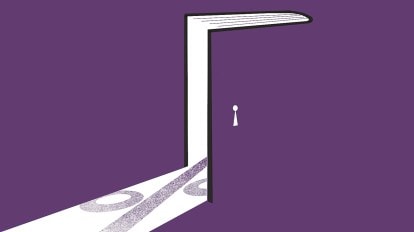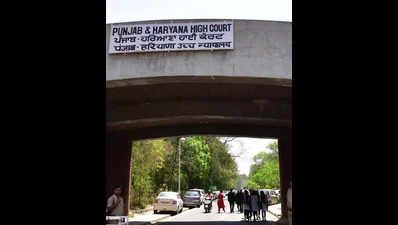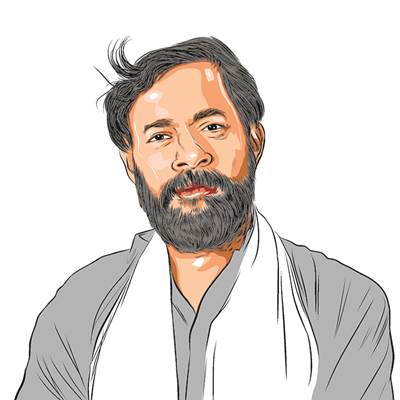09.04.2025..TODAY's...News of Untouchables .....अछूत समाचार.தீண்டாமை செய்திகள்.by Team சிவாஜி. शिवाजी .Shivaji.asivaji1962@gmail.com.9444917060.asivaji1961@gmail.com.facebook.sivajiyogatiruvannamalai.X.ShivajiA479023(in all languages)
Protests take place over Buddhism’s holiest site in India

Hundreds of monks from different parts of the country are now staging a sit-in, demanding that management of the Mahabodhi Temple in Bodh Gaya be handed to the Buddhist community

What is the Attitude of Hindutva Forces towards Dalits including Ambedkarites?

The attitude of Hindutva forces towards Dalits, including Ambedkarites, is complex and multifaceted, shaped by ideological goals, political strategies, and historical tensions. Hindutva, as an ideology promoted by organizations like the Rashtriya Swayamsevak Sangh (RSS) and its political affiliate, the Bharatiya Janata Party (BJP), seeks to unify Hindus under a singular cultural and national identity. This vision often clashes with the Dalit and Ambedkarite emphasis on caste-based equality and rejection of Brahmanical hierarchy, leading to a relationship marked by both co-optation and conflict.
Hindutva forces have historically aimed to assimilate Dalits into the broader Hindu fold, viewing them as an integral part of Hindu society but often without addressing the structural inequalities of caste. This approach stems from a desire to bolster Hindu numerical strength against perceived external threats, such as religious minorities, while maintaining traditional social hierarchies. Programs like the RSS’s *Samajik Samrasta* (social harmony) campaigns, which include community meals and outreach in Dalit settlements, reflect this strategy of inclusion. However, these efforts are frequently criticized by Dalits and Ambedkarites as superficial, failing to challenge the caste system’s oppressive foundations or empower Dalits as equals.
The relationship with Ambedkarites—followers of B.R. Ambedkar, who rejected Hinduism’s caste hierarchy and converted to Buddhism—is particularly fraught. Ambedkar’s legacy poses a direct ideological challenge to Hindutva, as he saw caste as intrinsic to Hinduism and irreconcilable with equality. Hindutva forces have responded by attempting to appropriate Ambedkar as a national icon, emphasizing his contributions to the Indian Constitution while downplaying or reinterpreting his critique of Hinduism. For instance, the BJP has honoured Ambedkar through memorials and rhetoric, portraying him as a unifying figure, yet this is often seen by Ambedkarites as a dilution of his radical anti-caste stance to fit the Hindutva narrative.
Politically, Hindutva forces have sought Dalit support as a vote bank, especially since the 1990s, when the BJP expanded its base beyond upper castes. This has led to some pragmatic concessions, such as promoting Dalit leaders like Ram Nath Kovind, India’s first Dalit president under a BJP-led government, or supporting reservation policies. However, this outreach is tempered by resistance from the Hindutva core base—upper and middle castes—who often oppose Dalit assertion. Incidents like the Bhima-Koregaon violence in 2018, where Dalit commemorations were attacked allegedly by Hindutva-aligned groups, highlight this tension, suggesting hostility towards Dalit mobilization that challenges Brahmanical dominance.
Ambedkarites, in turn, largely view Hindutva with suspicion, accusing it of perpetuating caste oppression under the guise of unity. They point to policies and actions—like the dilution of the Scheduled Castes and Scheduled Tribes (Prevention of Atrocities) Act or violence linked to cow protection vigilantism, which disproportionately affects Dalits—as evidence of Hindutva’s disregard for Dalit rights. The rise of educated and assertive Dalits, inspired by Ambedkar’s call to “educate, agitate and organize, ,” has further intensified this friction, as they resist assimilation and demand systemic change, often clashing with Hindutva’s vision of a homogenized Hindu society.
By: Sajid Raina
Srinagar: The representation of Scheduled Castes (SCs) and Scheduled Tribes (STs) in Jammu and Kashmir’s judiciary has increased over the past five years.
According to data from the Union Law Ministry, the number of SC/ST Judicial Officers in the Union Territory’s district and subordinate courts rose from 40 in 2020 to 53 by April 2025—the highest recorded in this period.
As of December 31, 2020, Jammu and Kashmir had a total of 40 Scheduled Caste (SC) and Scheduled Tribe (ST) judicial officers in its district and subordinate judiciary.
This included 9 SC and 6 ST Judges at the Civil Judge (Junior Division) level, 10 SC and 4 ST Judges at the Civil Judge (Senior Division) level, and 5 SC and 6 ST Judges serving as District Judges. These numbers reflected limited but notable representation of SCs and STs within the Union Territory’s judicial framework during that period.
As of December 31, 2021, the number remained at 40 SC/ST judicial officers. Among them were 7 SC and 9 ST Judges at the Civil Judge (Junior Division) level, 5 SC and 6 ST Judges at the Civil Judge (Senior Division) level, and 8 SC and 5 ST Judges at the District Judge level.
The figures showed a slight shift in distribution while maintaining a modest presence of SC/ST officers. As of December 31, 2022, Jammu and Kashmir had 39 SC/ST judicial officers across its district and subordinate courts. This included 9 SC and 8 ST Judges at the Civil Judge (Junior Division) level, 6 SC and 6 ST Judges at the Civil Judge (Senior Division) level, and 7 SC and 3 ST Judges serving as District Judges. The numbers reflected minor changes compared to previous years.
By December 31, 2023, the working strength of SC/ST judicial officers slightly decreased to 38. This included 9 SC and 7 ST Judges at the Civil Judge (Junior Division) level, 6 SC and 6 ST Judges at the Civil Judge (Senior Division) level, and 5 SC and 3 ST Judges at the District Judge level. The overall representation saw a small dip but remained relatively stable.
As of December 31, 2024, the representation of SC/ST judicial officers in Jammu and Kashmir rose significantly to 54—the highest in the five-year span. The composition included 13 SC and 11 ST Judges at the Civil Judge (Junior Division) level, 6 SC and 7 ST Judges at the Civil Judge (Senior Division) level, and 9 SC and 8 ST Judges serving as District Judges.
By April 2025, the total strength slightly decreased to 53 SC/ST judicial officers. This figure comprised 13 SC and 11 ST Judges at the Civil Judge (Junior Division) level, 6 SC and 7 ST Judges at the Civil Judge (Senior Division) level, and 9 SC and 7 ST Judges at the District Judge level. Despite the marginal dip, the representation remained strong and consistent. —(KNO)
 Get breaking news alerts, subscribe now
Get breaking news alerts, subscribe nowYogendra Yadav writes: It’s time for reservation in private universities
The legal, constitutional mechanisms are available — what’s needed is political will
 The profile of the private HEIs needs no guessing. They do not follow any reservation, except of course the unstated reservation for the rich. (Illustration by C R Sasikumar)
The profile of the private HEIs needs no guessing. They do not follow any reservation, except of course the unstated reservation for the rich. (Illustration by C R Sasikumar)Reservation in private universities and colleges is an idea whose time had come long ago. If there was any doubt about its legality, that dispute too was resolved by the Supreme Court more than a decade ago. It is an idea that enjoys the backing of the largest opposition party. True, in the last instance, you cannot stop an idea whose time has come. The trouble is that we live our lives in the instances before the last one, the intermediate space in which the deep state can delay, defer and dodge any idea. This idea needs political will. Now.
Is that political will in the offing? Last week, Jairam Ramesh, Congress general secretary in-charge of communication, issued a statement. On the face of it, the statement is merely to “reiterate” Congress’s long-standing demand for reservation for SC, ST and OBC candidates in private educational institutions. It recalls that in 2005, the Constitution was amended to extend reservation to private educational institutions, that its legality was upheld in 2014, and that this promise was a part of Congress’s manifesto in 2024 and has been backed by a parliamentary committee. Yet the timing of the statement was pregnant with political possibilities.
We do not know if this statement foreshadows the resolution of the Ahmedabad session of the AICC. We do not know how the ruling dispensation would respond to this demand if Congress presses for it. But one thing is sure: We are in for another round of debate on reservation and social justice.
The case for extending reservation to private higher educational institutions (or PHEI, which include “state private universities” and private “deemed universities”, besides aided and unaided private colleges) is straightforward. Higher education is a powerful mechanism for what scholars call “effectively maintained inequality”. Just as historically excluded communities are entering colleges and universities, the institutions they can access are being evacuated of educational quality and employment opportunities. The “happening site” — the upper end of higher education — is being effectively privatised into a space controlled by the upper-class and upper-caste elite. If we are to retain even a modicum of commitment to the constitutional guarantee of equality of opportunity, the state must step into this domain by extending the existing policy of reservation for SCs, STs and OBCs to private colleges and universities.
We are witnessing two large-scale and long-term movements in the education sector. First, there is an unprecedented surge, a historic wave, in seeking higher education, mainly driven by the belated entry of communities that were historically denied learning. Satish Deshpande summarised this trend: “Between 1990–1991 and 2018–2019, the number of universities has increased almost five-and-a-half times and total enrolment has shot up by seven-and-a-half times, while the Gross Enrolment Ratio (GER) has gone up by two-and-a-half times.” The rate of growth is higher for all the marginal social groups — SC, ST, OBC and Muslims — and for women within each of these groups.
That should have been good news but for the second phenomenon: The elite exodus from and the collapse of public higher education. We are witnessing the most phenomenal rise in the number of PHEIs. From 2015 to 2024 the number of private universities (including deemed universities) has gone up from 276 to 523. Private universities accounted for 26 per cent of total enrolment in 2021-22. That ratio was more lop-sided at the college level: Private unaided colleges account for about 45 per cent of the total students. The public colleges and universities that the socially disadvantaged communities flock to are overcrowded and under-staffed, starved of even the minimum funds. These are increasingly sites for “time pass” that cannot offer knowledge, skills or jobs. In contrast, private colleges and universities have the desirable classroom size, decent to obscene infrastructure and their pay packages now attract the best faculty.
The cumulative effect of these two shifts is a massive divide in social access to educational opportunities. As Satish Deshpande puts it: “There is something illusory about the widening of access to (higher education) that allows the older elites to maintain their lead — or ‘social distance’ — in (higher education) despite the entry of non-elites.”
The profile of the private HEIs needs no guessing. They do not follow any reservation, except of course the unstated reservation for the rich. The latest All India Survey of Higher Education data for 2021-22 shows that upper-caste Hindus (around 20 per cent of the country’s population) are well over 60 per cent of private university students. Here is the social group-wise breakdown of students in private (state private and deemed private) universities: SCs were just 6.8 per cent (current population share about 17 per cent), STs 3.6 per cent (population around 9 per cent), OBCs 24.9 per cent (population between 45-50 per cent) and Muslims 3.8 per cent (population around 15 per cent). Needless to say, the picture would be even more skewed in the case of elite private universities and the sought-after courses in these institutions.
Reservation can make a difference. If we compare the social profile of students in public sector universities that are required to follow reservation, the difference is obvious: 14.6 per cent SCs, 6 per cent STs, and 31.2 per cent for OBCs. There is little difference in the case of Muslims (4.1 per cent) who do not enjoy reservation. For all its limitations, quota-based affirmative action works.
Hence, the need for the state to step in. Sadly, for all its lovely pronouncements, the new National Education Policy has little to remedy this situation. No matter what the letter of any education policy document says, commercialisation and privatisation of education have been the de-facto education policy of our country for several decades now. The only way of correcting this is through political action. The core of such an action should, of course, be the strengthening of public educational institutions — more funds, better governance, filling of regular faculty vacancies, professional autonomy, updated syllabi and so on. At the same time, this must be supplemented with a mandate to private institutions to follow the national policy of reservation for SCs, STs and OBCs. This should be combined with a requirement to offer freeships and scholarships to a specified proportion of students.
most read
- 1Temples, trade, defence: With PM Modi’s Sri Lanka visit, a renewed commitment to bilateral ties
- 2Transhipment facility shutdown: Bangladesh has forgotten that India has less to lose
- 3Express View on assault on women in Thane for not speaking Marathi: MNS is out of touch with reality
- 4Modi-Yunus meeting: India needs to recognise that the July Revolution in Bangladesh was not just a change of guard. It was an aspiration for a return to democracy
- 5SC’s decision led to my firing. I deserve a chance to prove my innocence
Would this be legally permissible? Jairam Ramesh’s statement effectively answers that question. In 2005, the 93rd Amendment to the Constitution introduced Article 15(5) that allowed the state to make “any special provision” for the advancement of SCs, STs or SEBCs (the legal name for OBCs) which relates to “admission to educational institutions including private educational institutions, whether aided or unaided by the state, other than the minority educational institutions”. The enabling provision was used by Parliament to pass the Central Educational Institutions (Reservation in Admission) Act, 2006 to provide for reservation for OBCs, but only in central educational institutions. The Supreme Court (Ashok Kumar Thakur vs Union of India, 2008) upheld this reservation for state-run and state-aided institutions, keeping the issue of unaided private institutions open. This remaining issue was also resolved, first by a two-judge bench (IMA vs Union of India, 2011) and then a five-judge bench (Pramati Educational and Cultural Trust vs Union of India, 2014) that upheld reservation in unaided private institutions. So, there is no legal hitch any more.
Bringing this issue to the political agenda would address a massive lacuna in the policy of social justice. Bringing Dalit, Adivasi and pichhada together on the same platform could also redress a deep problem in the politics of social justice.
HC upholds reservation in promotions for Haryana govt posts, but insists on exclusion of creamy layer

About the Author
Ajay SuraAjay Sura is Senior Assistant Editor with The Times of India Chandigarh. He covers news concerning the State of Haryana, Punjab & Haryana High Court and Defence & Military Affairs. He likes to analyse political developments and decoding judicial pronouncements. His hobbies include travelling, mountaineering and trekking.








Comments
Post a Comment